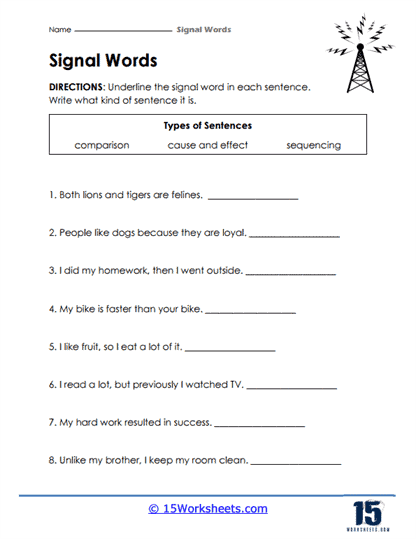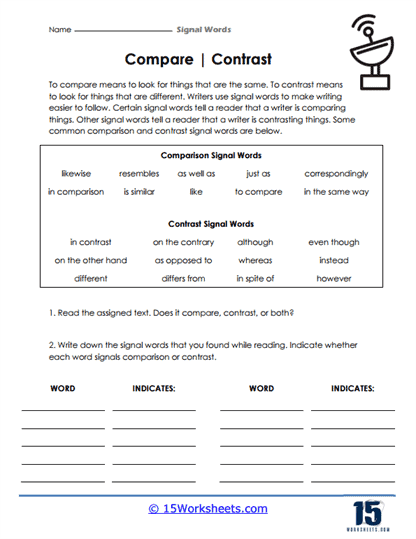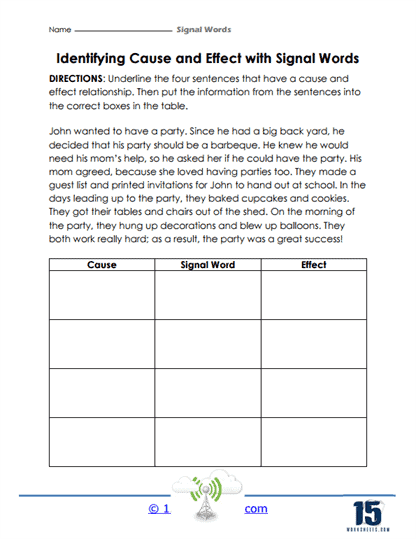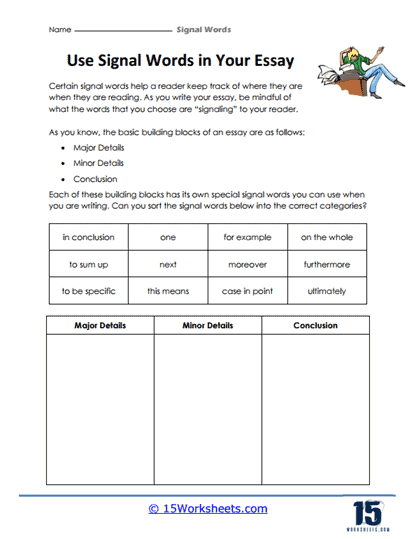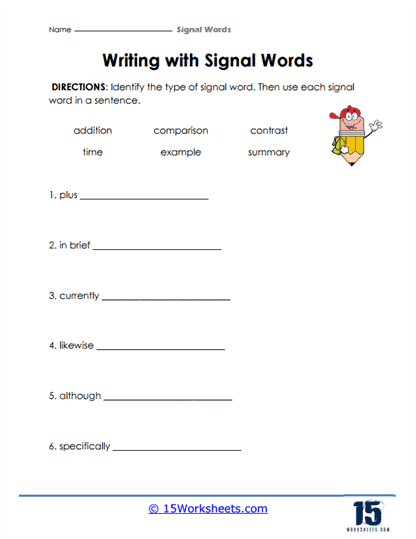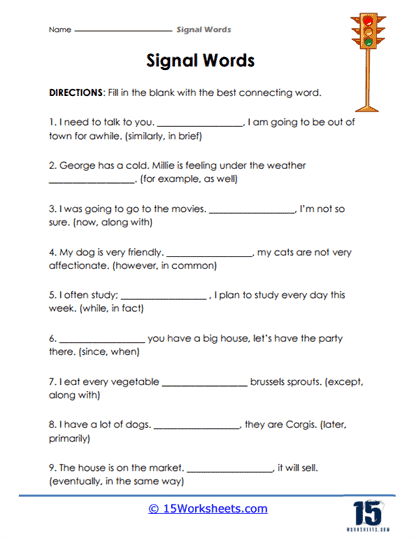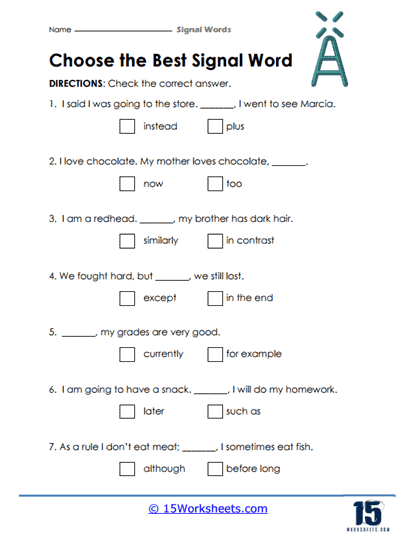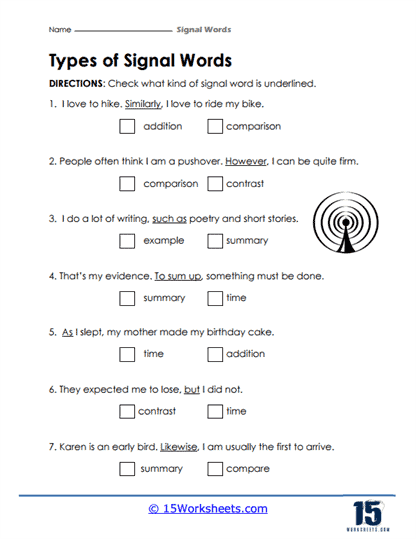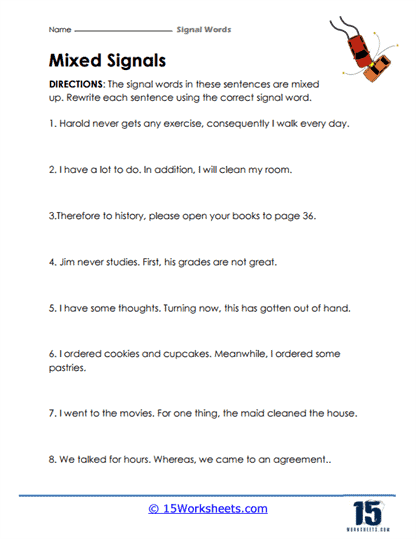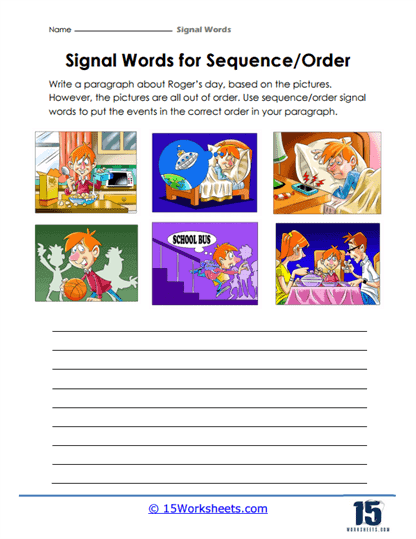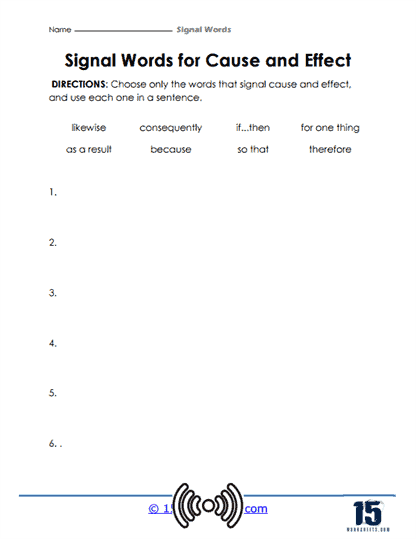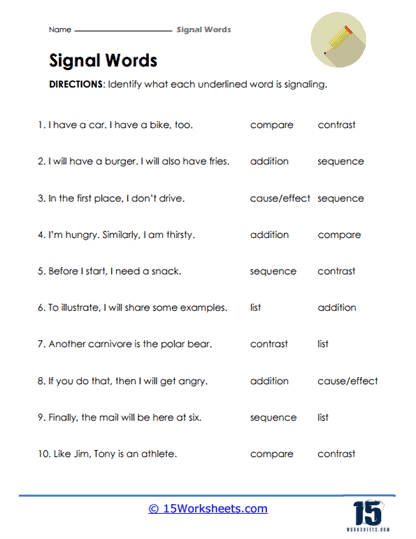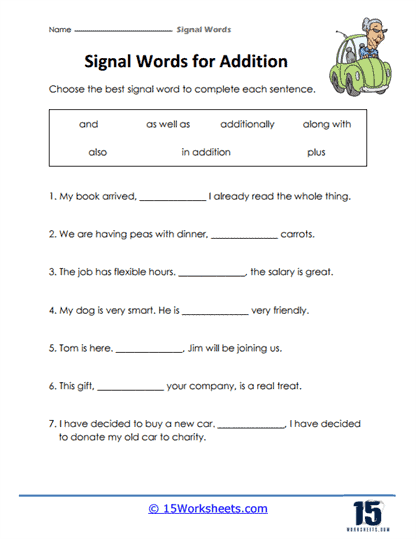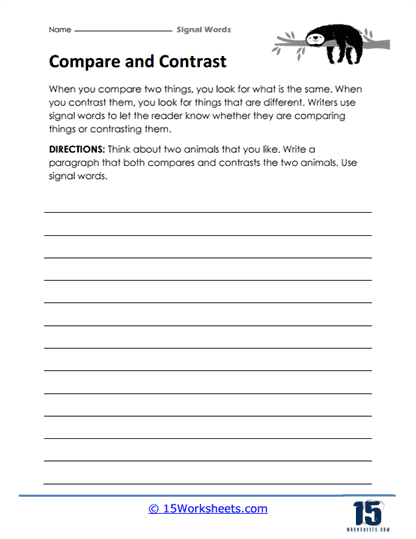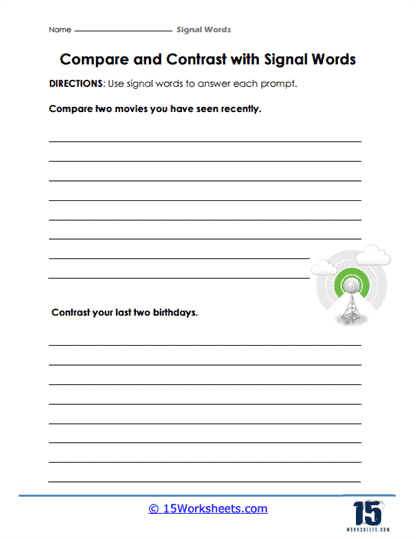Signal Words Worksheets
All About These 15 Worksheets
This series of 15 worksheets on signal words offers a comprehensive and interactive learning experience for students to develop their understanding of signal words and their role in effective communication. Through a variety of activities and exercises, students will enhance their reading comprehension, improve their writing skills, and develop critical thinking abilities.
The exercises in these worksheets focus on identifying and utilizing signal words to enhance understanding and coherence in both written and spoken language. Through these worksheets, students will:
- Identify the signal words in sentences and whether they use comparison, cause and effect, or sequencing;
- Determine which signal words are used for introducing major details, minor details, and conclusion;
- Be familiar with the different types of signal words and their function in writing;
- Fill in the blanks with the appropriate signal words to complete sentences;
- Rewrite sentences to include proper usage of signal words;
- Write a paragraph that shows how signal words can be used to show a sequence or order of events;
- Use different types of signal words in their own sentences;
- And answer writing prompts about comparing and contrasting while using the appropriate signal words correctly.
This series of worksheets on signal words equips students with the necessary tools to enhance their reading comprehension, writing skills, and oral communication. By focusing on signal word identification, usage, and their impact on overall meaning and coherence, these worksheets develop critical thinking, analytical skills, and improve students’ ability to express ideas effectively. Overall, through these worksheets, students gain a deeper understanding of the role of signal words in guiding readers, establishing relationships between ideas, and ensuring clear communication in various contexts.
What Are Signal Words in Reading?
Signal words are commonly known as transitional words and are used to transition or shift between two different concepts or ideas connected to each other in a way. These words hint or signal the direction in which a written passage turns and help the reader anticipate or predict what is next to come in a reading.
For instance, one can insert a signal word between two passages that are making a comparison or creating a contrast between two ideas or concepts.
A writer needs to learn how to use signal words to write as coherently and professionally as possible. Without the proper usage of the appropriate signal words, a writer would be unable to structure their concepts properly, and the passage would be unable to communicate logically.
What Are Some Common Categories of Signal Words in Reading?
Signal or transitional words are often used when reading is about to elaborate on a concept by providing some examples. These words will help hint to the reader that their reading is about to offer some related examples. Some of such signal words include:
- For instance: this signal word is used to draw attention to an example. It is used after a concept or idea has been mentioned and is often the beginning words of the sentence containing the example.
- For example. Unlike ‘for instance,’ for example, can be inserted in the middle of a sentence when the examples are about to follow a concept.
- Primarily: this signal word indicates the main purpose or the reason behind something. This signal word is used within a sentence.
- Such as: this signal word is very similar to for example, and is also inserted within a sentence.
Comparison
Whenever a writer tries to make a comparison between two similar objects, concepts, people, or ideas, they use the following signal words to structure their work coherently:
- Likewise: this signal word is used when two similar methods, situations, or emotions are compared.
- Similarly: this signal word usually is the beginning word of a sentence that makes a comparison to the content before it. It is used when a comparison is being made between two things.
Contrast
Whenever a reading is trying to draw a comparison between opposite or contrasting people, objects, or concepts, they use the following signal words:
- However: this signal word is often used at the beginning of a contrasting statement and is followed by a comma.
- Although: this signal word is used to link two contrasting concepts or show how one concept makes the other more interesting/surprising.
- On the Contrary: this phrase is used to normally start a contrasting statement that contains the opposite of what was mentioned in the previous sentence.

